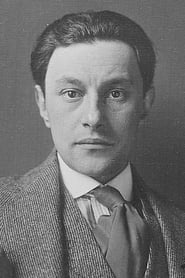John Gottowt
Actor
John Gottowt (born Isidor Gesang; 15 June 1881 – 29 August 1942) was an Austrian actor, stage director and film director for theatres and silent movies. Gottowt was born in Lemberg, Austria-Hungary (present-day Lviv, Ukraine) into a Jewish family. After his education in Vienna, he joined the Deutsches Theater in Berlin in 1905, working for Max Reinhardt as an actor and director. Gottowt was mainly active in different theatres in Berlin as a character actor and director. His first silent film appearance was in Paul Wegener’s Der Student von Prag ("The Student of Prague") (1913). In 1920 he appeared in...
Born: June 15, 1881 in Lemberg, Galicia, Austria-Hungary [now Lviv, Ukraine]
Died: August 29, 1942 (Age 61)
Streaming Sources for all John Gottowt Movies & TV Shows

